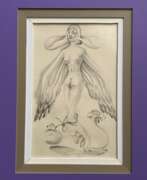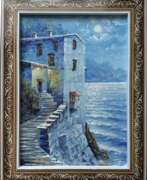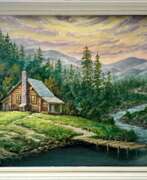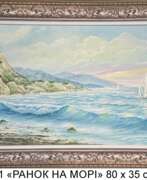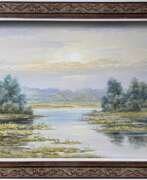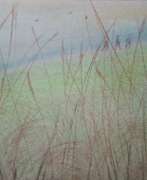Neorealism
 Неореализм. Даниэль Сперри. Синий стол в ресторане Галереи J. 1963.jpg)
Neorealism
Neorealism, a significant movement in the arts, emerged primarily in Italy and Britain, profoundly impacting cinema, painting, and literature. It flourished particularly after World War II, aiming to realistically depict social problems and events leading up to and following the war.
In Britain, Neorealism began on the eve of World War I with artists like Harold Gilman and Charles Ginner. They sought to capture modernity and everyday life through vibrant brushstrokes and bright colors. Their manifesto, published in 1914, emphasized a direct connection with nature and reality, moving away from what they perceived as academicism in contemporary art. Key works include Gilman's "Interior with Mrs. Mounter" (1916-17) and Ginner's "The Circus" (1913).
Italian Neorealism, particularly in cinema, reflected the economic and moral struggles of post-war Italy. This style was developed by filmmakers like Luchino Visconti, Cesare Zavattini, and others, with notable films like Visconti's "Ossessione" (1943) and Roberto Rossellini's "Rome, Open City" (1946). The movement's cinema was characterized by authenticity, a sense of historical relevance, and a political commitment to progressive social change.
The movement also had a literary aspect in Italy, with Neorealist writers emerging strongly after the fall of the Fascist regime. Influential authors included Nobel Prize-winning poet Salvatore Quasimodo and novelists like Alberto Moravia and Ignazio Silone, who wrote with intense feelings and experiences instilled by Fascist repression and the war.
In the 1940s, Neorealism in Italian painting began, significantly influenced by Paul Cezanne and Cubism. This form of Neorealism highlighted themes of authenticity and reality experienced by ordinary people, often depicting civilians fighting against injustice and suffering from poverty.
About two decades later, Neorealism evolved in France as a visual art movement, initiated by art critic Pierre Restany and painter Yves Klein. This movement, known as Nouveau Réalisme, was developed as a response to Pop Art and capitalism, emphasizing a critically perceptive approach to reality and illuminating dark truths of society.
For collectors, auctioneers, and art experts, understanding Neorealism offers insights into the socio-political landscapes of the times and regions it emerged in, reflecting the realities of ordinary life and the prevailing sentiments of those periods. The movement spans various forms of art, providing a rich field for exploration and collection.
If you're interested in staying updated on sales and auction events related to Neorealism, sign up for our updates. This will keep you informed about new developments and opportunities in this fascinating art movement.
| Country: | France, Italy, United Kingdom |
|---|---|
| Start of the period: | 1914 |
| End of the period: | 1970 |

